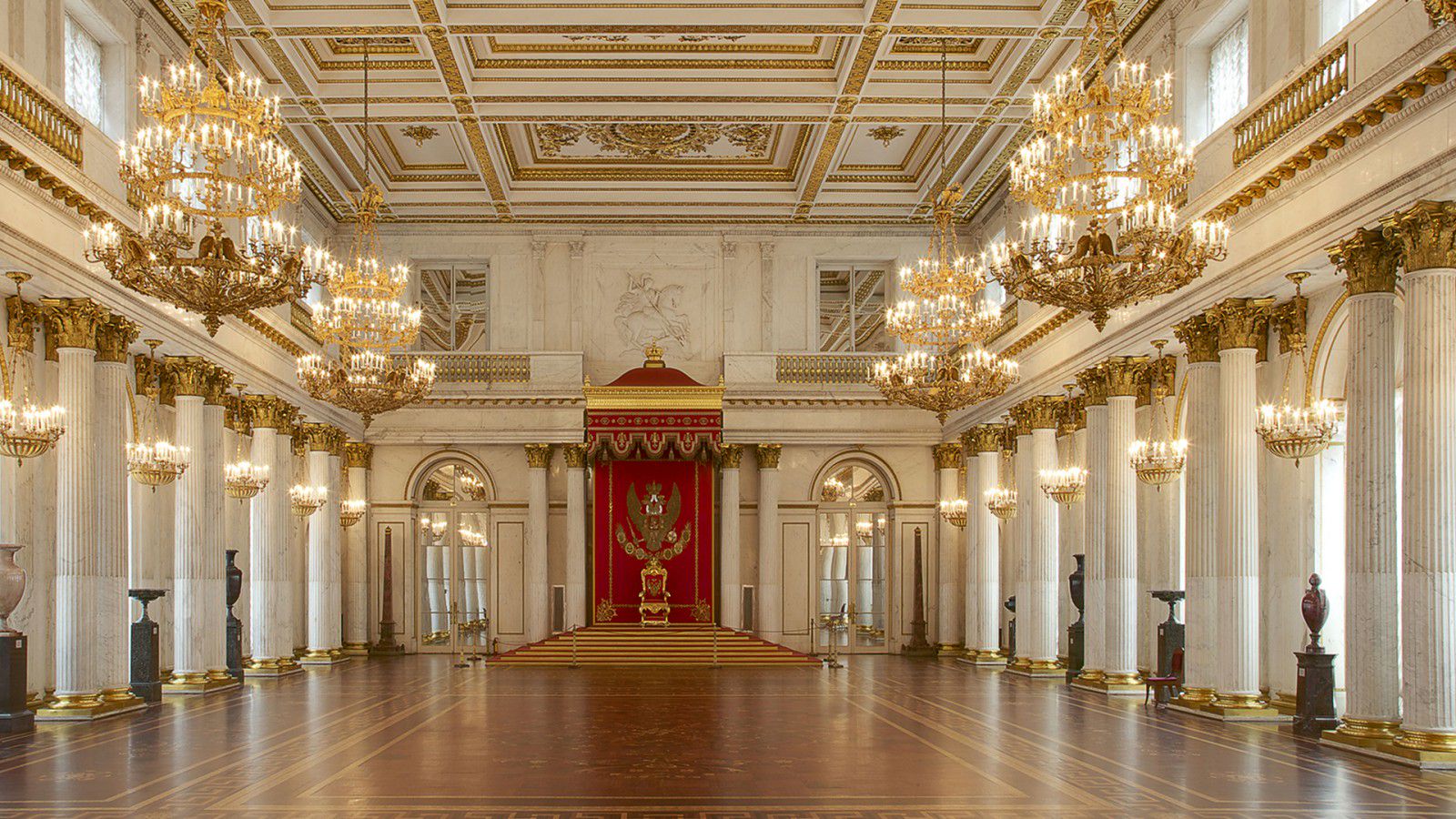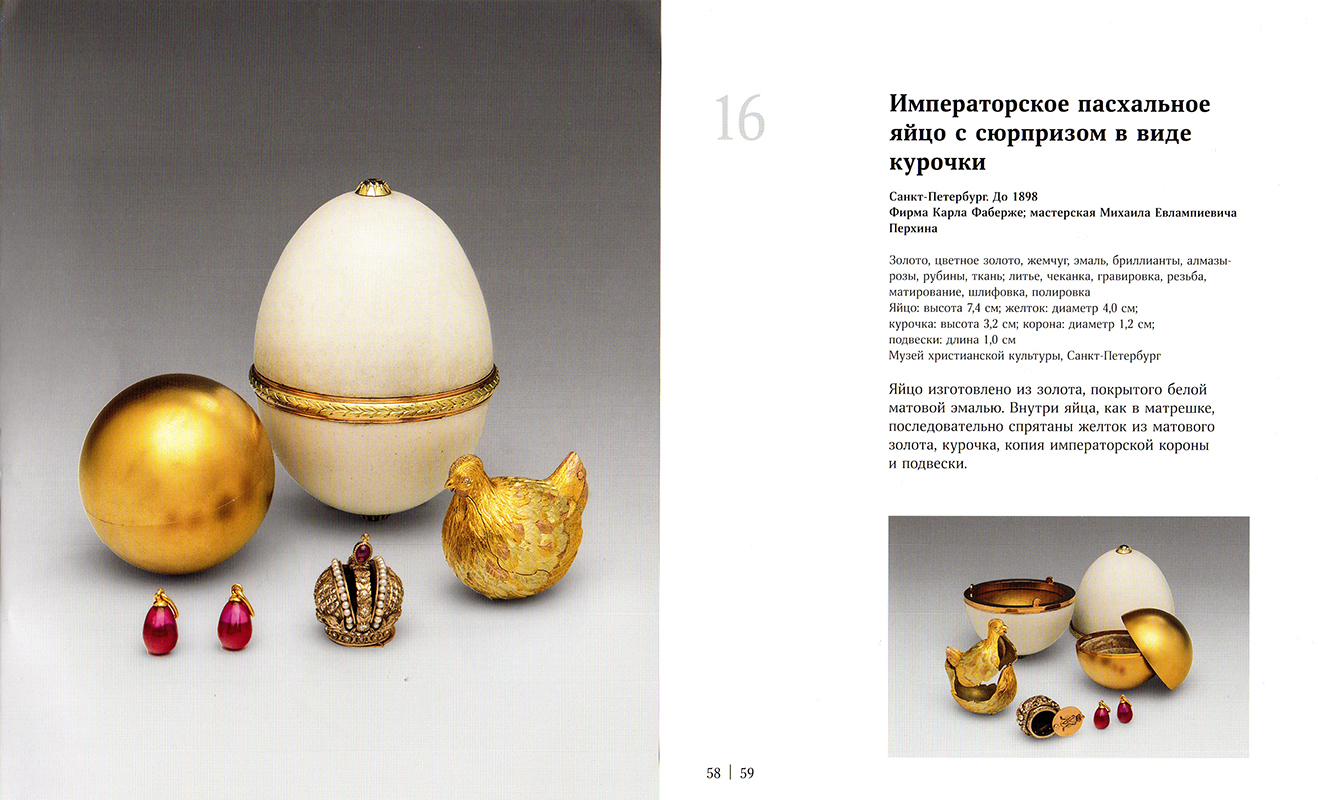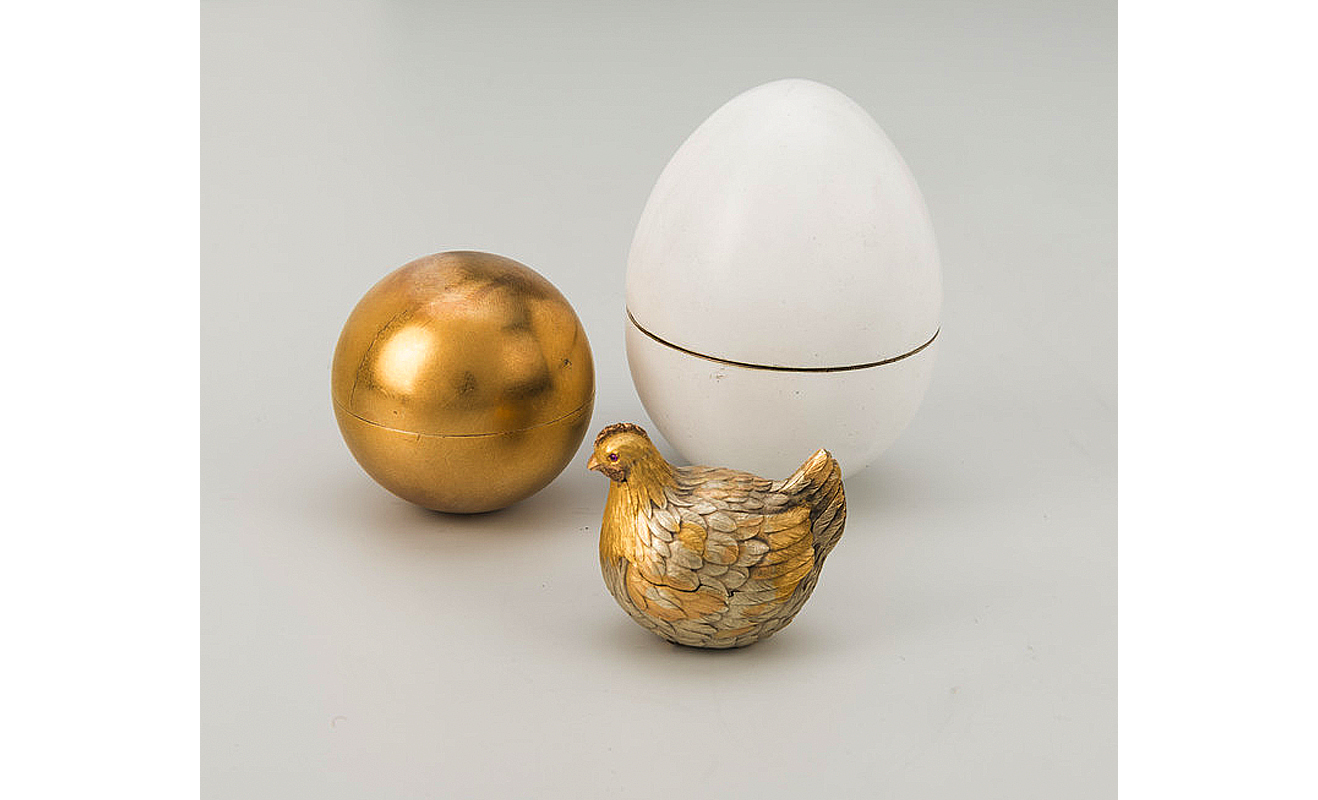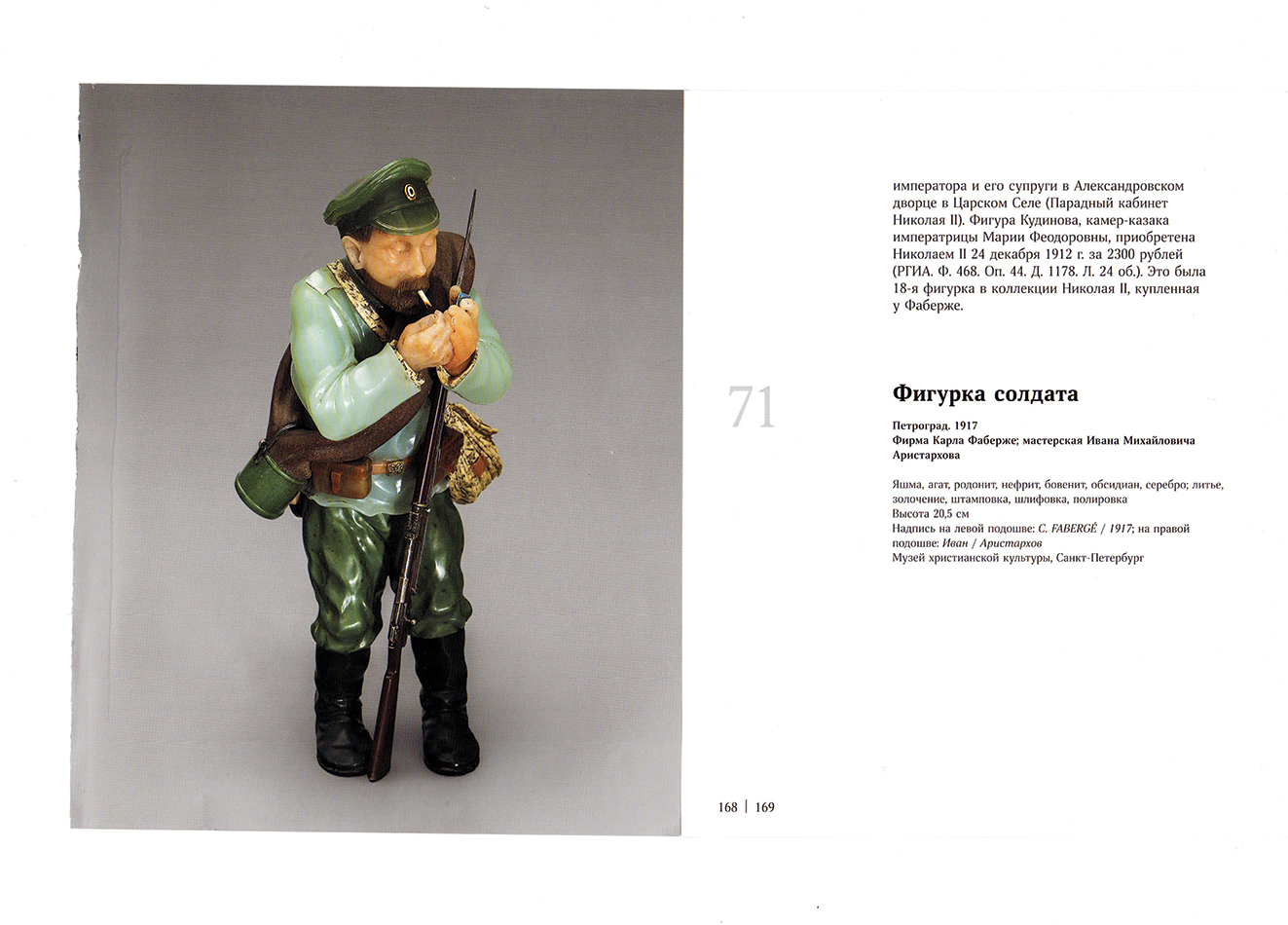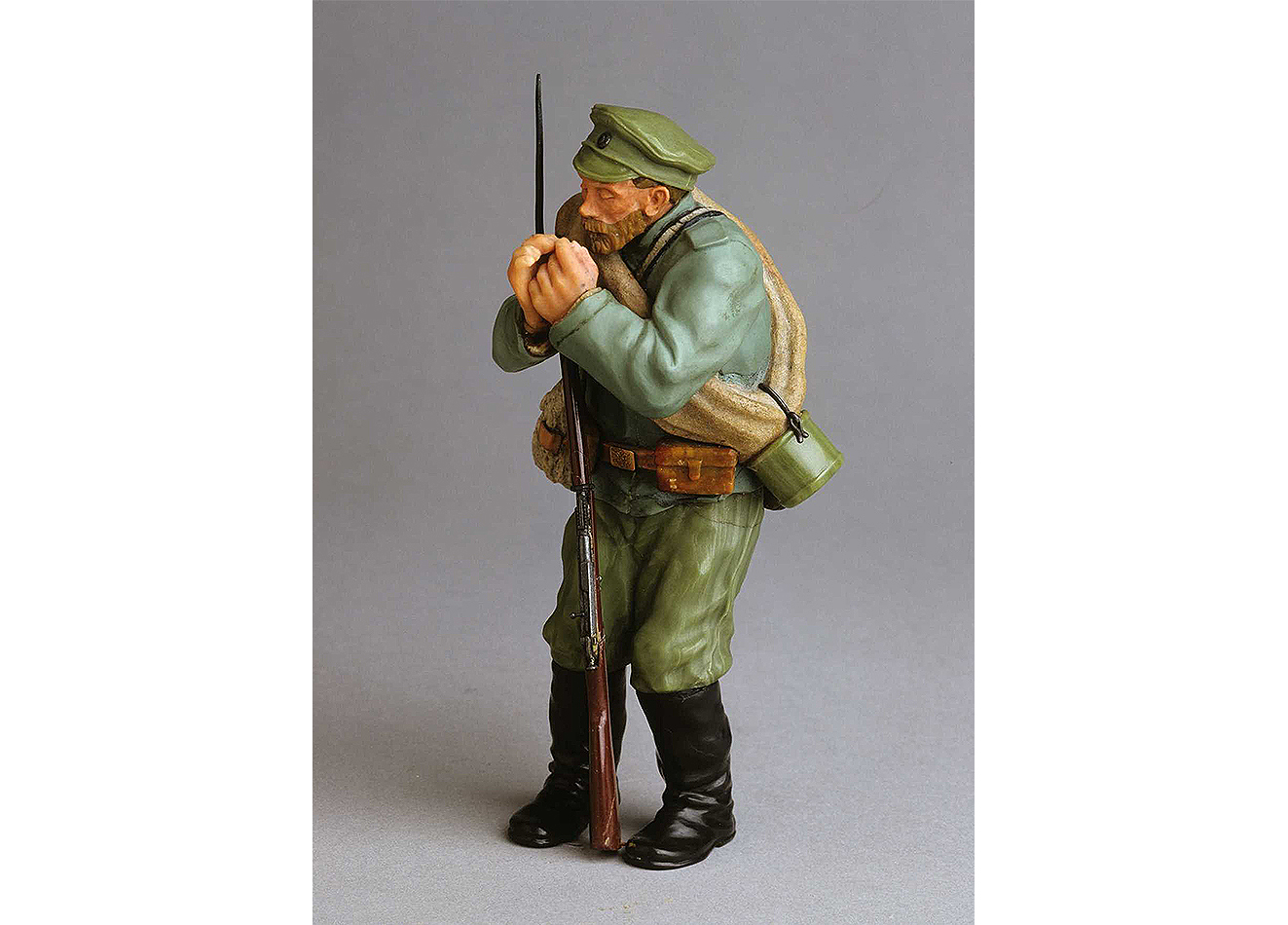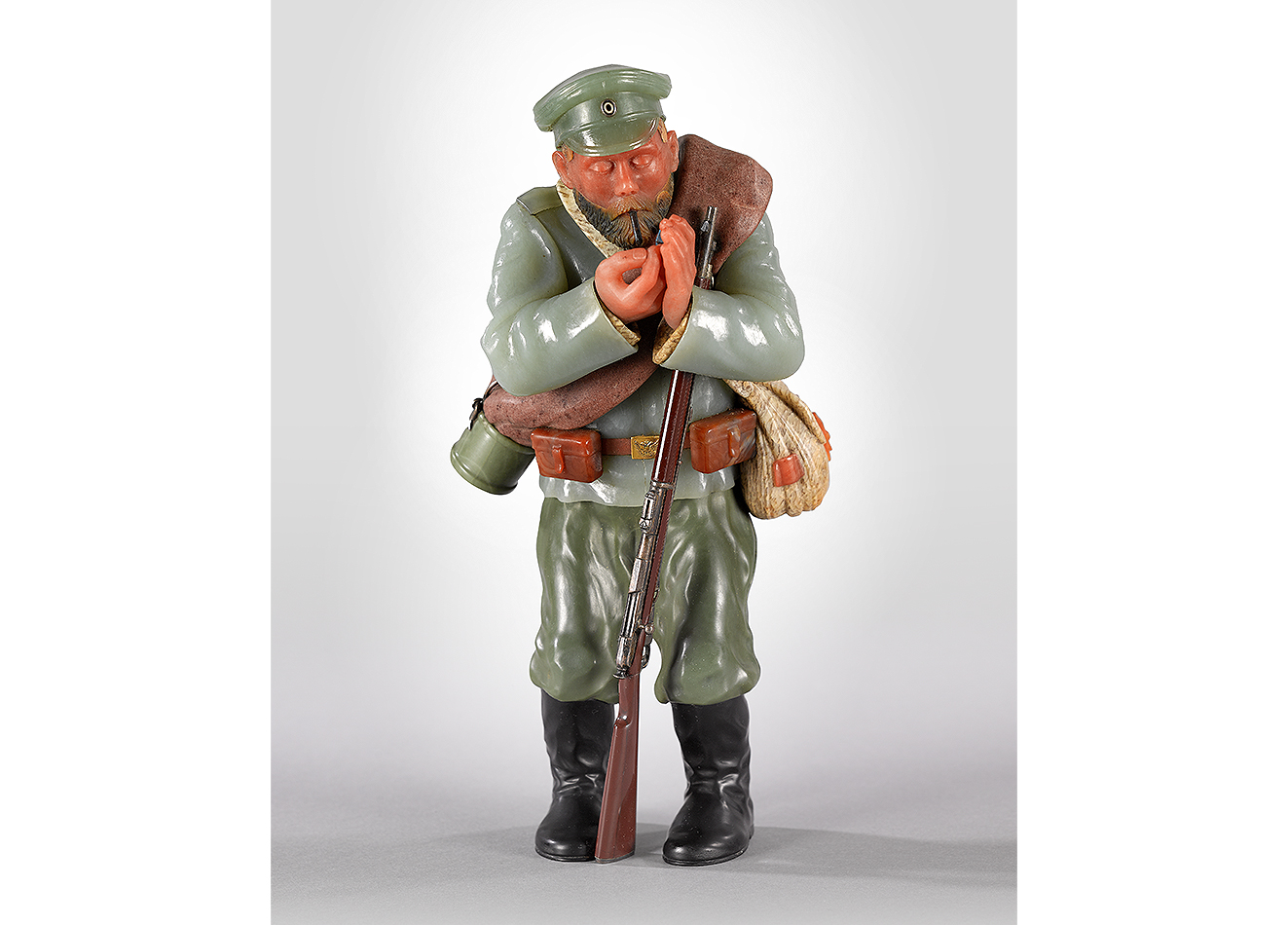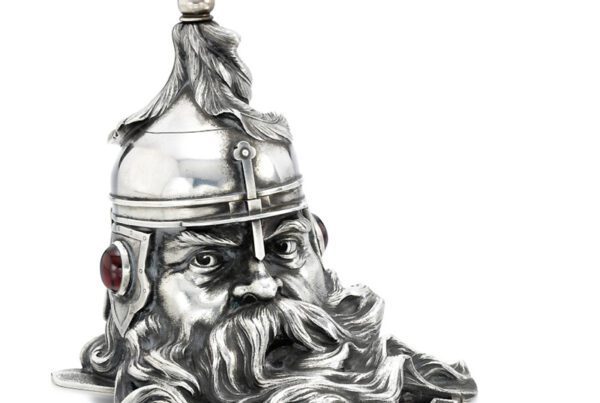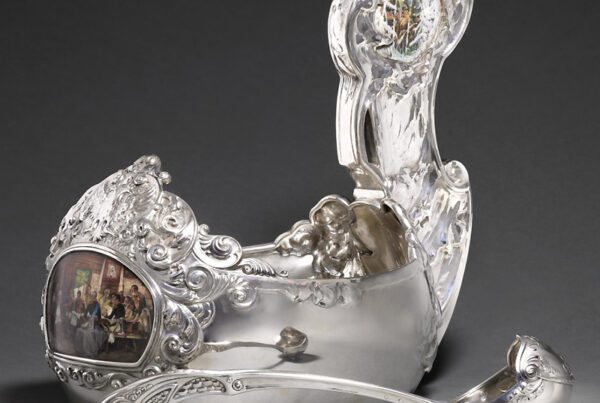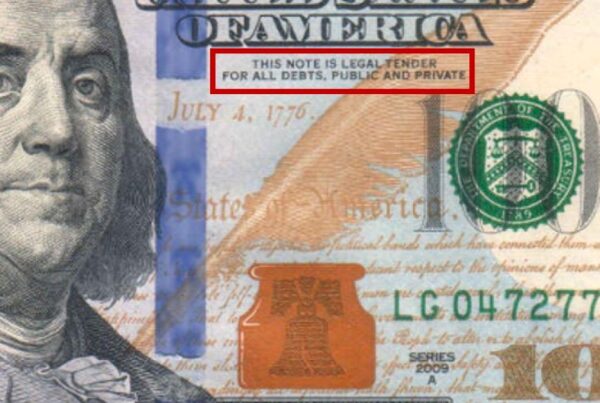Dear Mr Piotrovsky
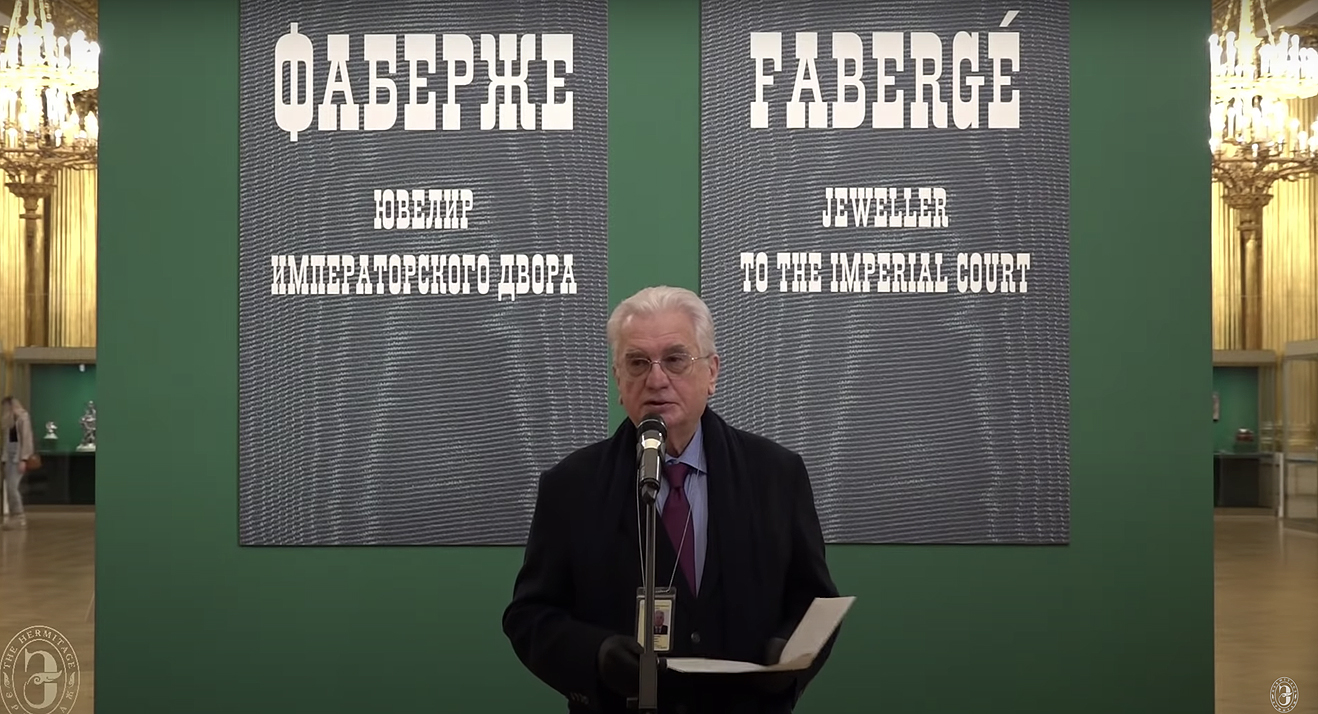
Mikhail Piotrovsky at the opening of the exhibition Fabergé – Jeweller to the Imperial Court (St Petersburg – 24 November 2020)
On November 24 you inaugurated the exhibition Fabergé – Jeweller to the Imperial Court in the Hermitage Museum. As you noted in your speech at the opening ceremony, this is the first major Fabergé exhibition at the Hermitage since 1993. For connoisseurs and lovers of Russian art, it should be an important event – one that furthers their knowledge of this great jeweller’s heritage. Contrary to expectations, however, and to the dismay of people with even a limited knowledge of Fabergé, the show contains not just controversial or dubious items, but a number of outright fakes.
Side by side with splendid exhibits from the Hermitage, Pavlovsk and Peterhof can be found vulgar replicas. The Soldier lighting a cigarette is a crude copy of Savitsky’s figurine in the Fersman Museum. The Hen Easter Egg is a recent copy of the original, which can be admired just 1,000 steps from the Hermitage, in the Fabergé Museum on Fontanka. Neither the so-called ‘Tenth Wedding Anniversary’ Egg – allegedly a gift from Nicholas II to Empress Alexandra in 1904 – nor the red enamelled ‘Alexander Nevsky’ Easter Egg belong to the 20th century… but to the 21st! Both items are more suitable for a gift shop than Russia’s top museum. The list goes on, but the examples I have cited are eloquent enough.
- Fabergé – Jeweller to the Imperial Court (exhibition catalogue)
- Hen Easter Egg (Fabergé Museum, St Petersburg)
I was flabbergasted that the Hermitage’s partners for this exhibition do not include the Moscow Kremlin, with its unique collection of Imperial Easter gifts, or the Fabergé Museum in St Petersburg, which contains the largest collection of Fabergé masterpieces in the world. Nor does the exhibition include any works from famous private collections. We find instead a plethora of items from the ‘Fabergé Museum’ in Baden-Baden; the ‘Museum of Christian Culture’ in St Petersburg; and a so-called ‘Russian National Museum’ that exists only on paper.
- Fabergé – Jeweller to the Imperial Court (exhibition catalogue)
- Soldier Figurine (Fersman Mineralogical Museum, Moscow)
- Fake Soldier Figurine (Private Collection)
In your catalogue preface you extol the ‘splendid’ collections of these three institutions, and appear to rank them on a par with the Fabergé Museum in St Petersburg. Anyone can enjoy the Fabergé Museum on Fontanka – by strolling through its stately galleries, attending a talk or spending time in its bookshop…. But please tell me where to find the grand-sounding ‘Russian National Museum’! I have been itching to admire its ‘splendid’ collection for ages, and cannot wait to scrutinize its holdings. I am preparing an article that discusses these ‘collections’ in detail; I hope you will be interested in its assessment of what is to be found in these ‘wonderful’ museums.
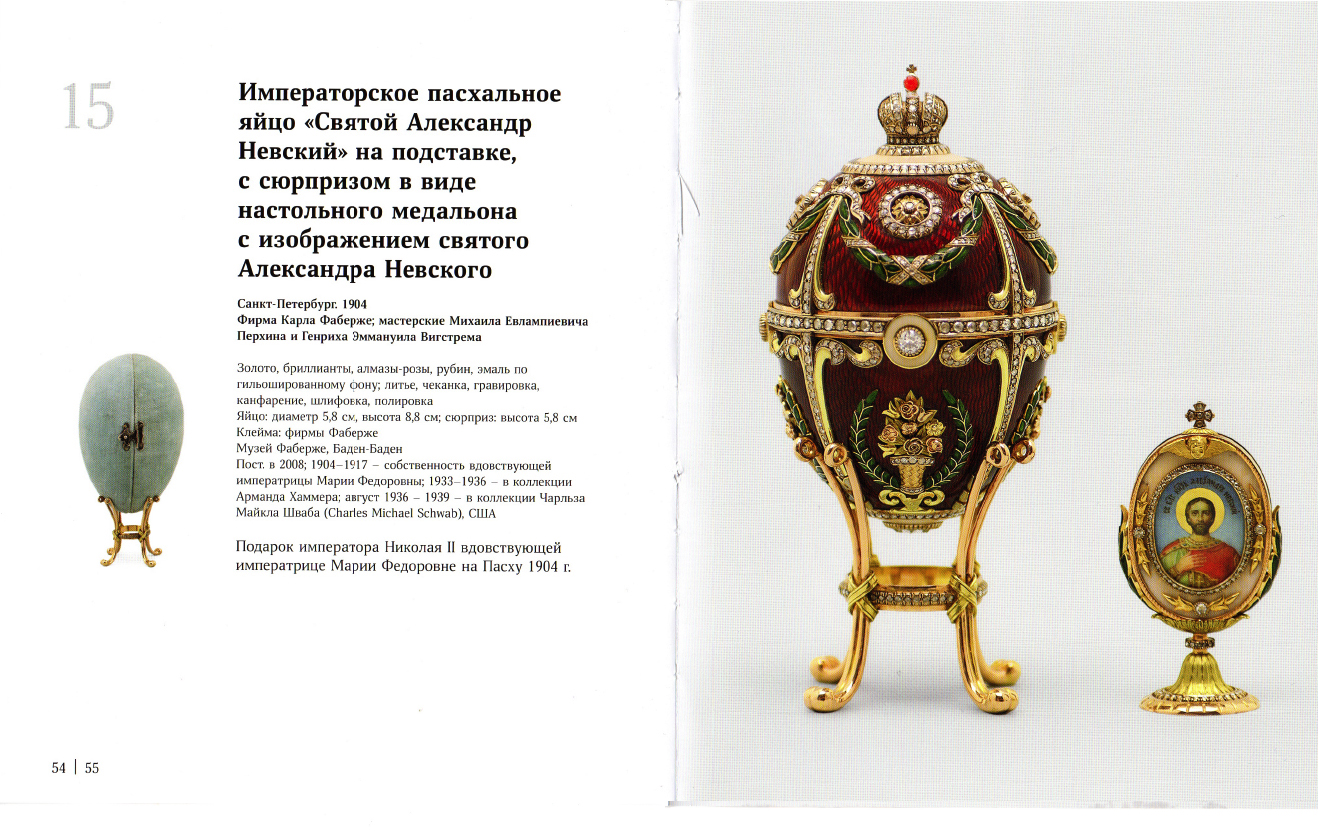
Fabergé – Jeweller to the Imperial Court (exhibition catalogue)
I struggle to understand why the Hermitage should co-operate with small private museums, and their doubtful collections, rather than with museums of global repute. I trust the Museum’s curators can sleep easy with their choice. The goal of your ‘partners’ is clear: to legitimize counterfeits and enhance their market-value by exhibiting them in the Hermitage. Perhaps the owners of these ‘chefs d’œuvre’ view the Hermitage itself as a prospective buyer. What on earth are the benefits of such collaboration for your Museum?
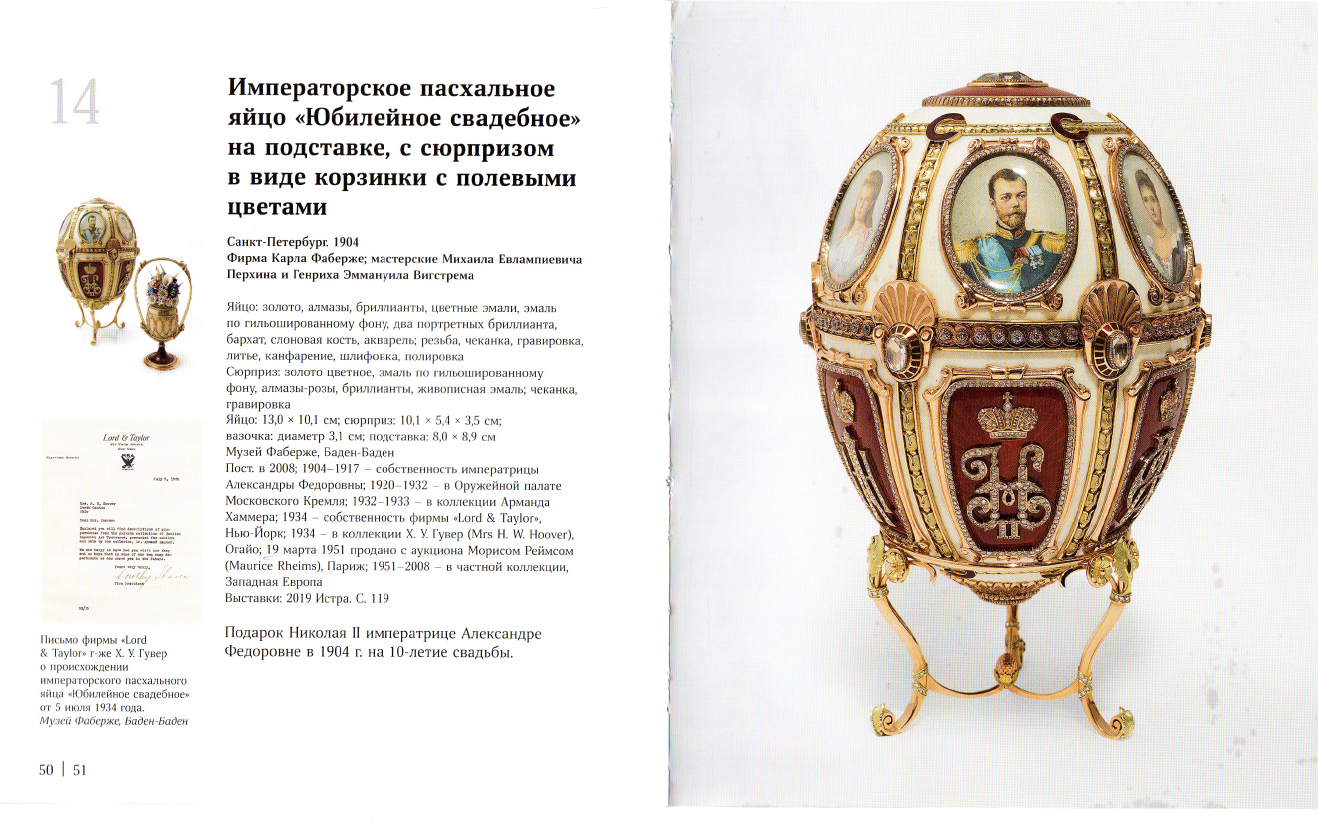
Fabergé – Jeweller to the Imperial Court (exhibition catalogue)
I can only guess as to why tawdry fakes have been allowed into the venerable Hermitage. Is it mere incompetence on the part of the curators and Museum management responsible for the stringent selection and authentication of the works displayed under the Hermitage’s auspices? Should we assume that fakes are exhibited in the Hermitage as a result of implacable corruption – brought to you in a suitcase by Someone Important to whom you could not say No…. I would find it very hard to believe that you, Mikhail Borisovich Piotrovsky, with your formidable reputation and high-level connexions, could be so intimidated as to trample the Hermitage’s reputation underfoot, and willingly offer your august halls for criminal display – but how has this shambles come to pass? Maybe I’m missing something. Maybe there’s something we’re not meant to know. Maybe there’s some other explanation….
Unfortunately, the exhibition curator Marina Lopato is no longer with us to address these questions. At the opening ceremony, and in your catalogue introduction, you employed the verbal dexterity of a career diplomat to hide behind her name, assigning to her all responsibility for any exhibition shortcomings – for which Mikhail Piotrovsky, an Oriental specialist as everybody knows, could in no way be blamed. Marina Lopato’s young colleague Tatyana Baboshina was inexplicably tasked with completing preparations for the exhibition, even though her knowledge of Fabergé is so superficial that she has nothing worthwhile to say about the show.
Your comments about discrepancies regarding the authenticity of Fabergé’s works are patently absurd, and seem designed for an ignorant audience. What debate or discussion can there be about a so-called ‘Tenth Wedding Anniversary’ Egg supposedly made in 1904, when it is common kowledge that Fabergé produced no Easter gifts in 1904 or 1905 due to the Russo-Japanese War? How, pray, do you explain that the ‘1904 Egg’ is decorated with modern miniatures, based on photographs taken in 1906? How come the mountain of brass and copper teapots, buckets, pots, bowls and other items from the city scrapyard are attributed to Fabergé? What are the grounds for your assertions about ‘Imperial Provenance’? How can copies be claimed to be genuine? Can you name any experts who share the belief in the authenticity of these items with their self-interested owners? I realize that exhibition visitors are unlikely to pose such awkward questions – and, no doubt, will dutifilly believe whatever the Hermitage catalogue tells them. But this gives you no right to mislead them.
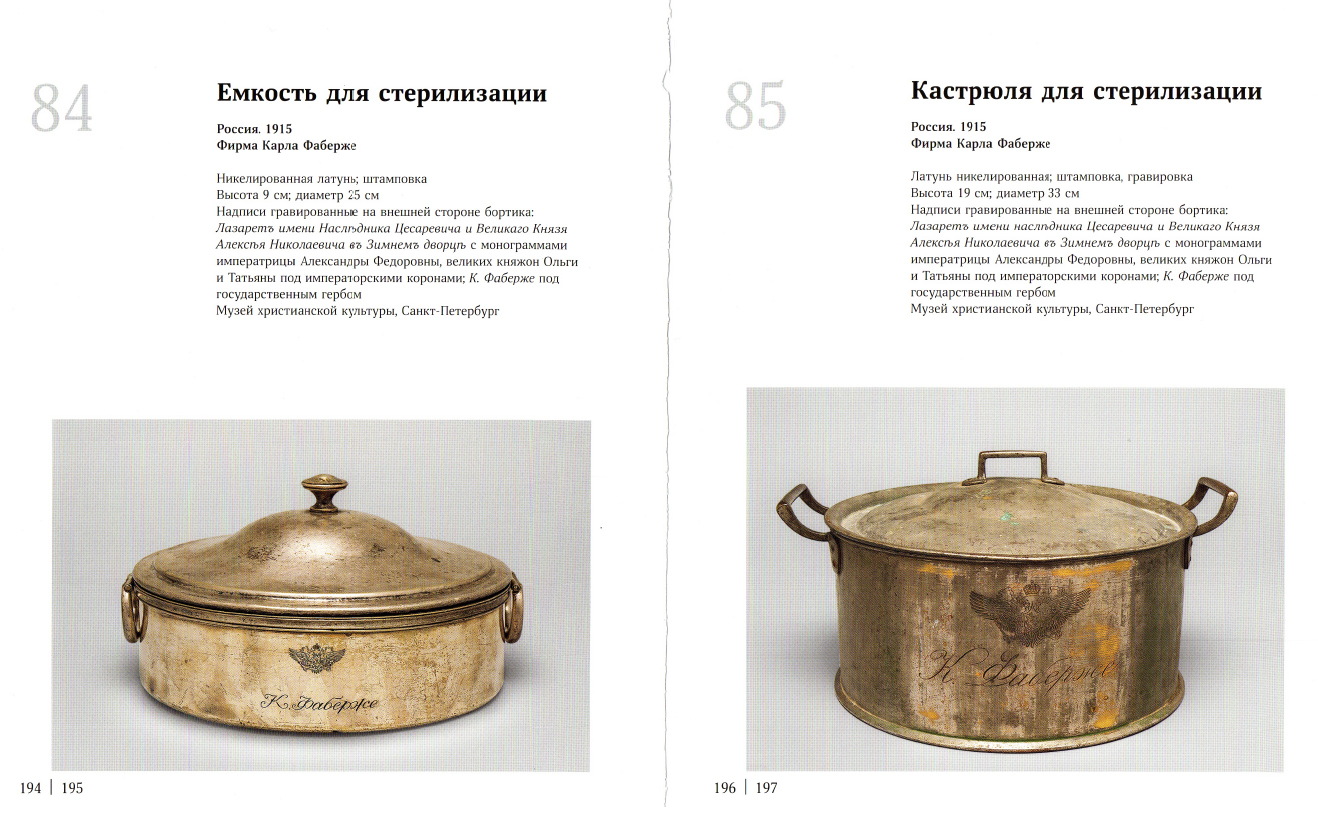
Fabergé – Jeweller to the Imperial Court (exhibition catalogue)
Contrary to what you announced, the Hermitage has initiated no public discussion about the attribution of these ‘new’ items. Your modest catalogue, with its derisory print-run of 1,000 copies, contains nothing but hollow, unsubstantiated claims from its authors and compilers. Not one item from private museums has been included in any credible exhibition of Russian art in Western museums – even though a bone fide Imperial Egg would be welcomed with open arms. I challenge you to show the ‘Imperial Eggs’ from your current show in the West. Sotheby’s and Christie’s would not go near them with a bargepole.
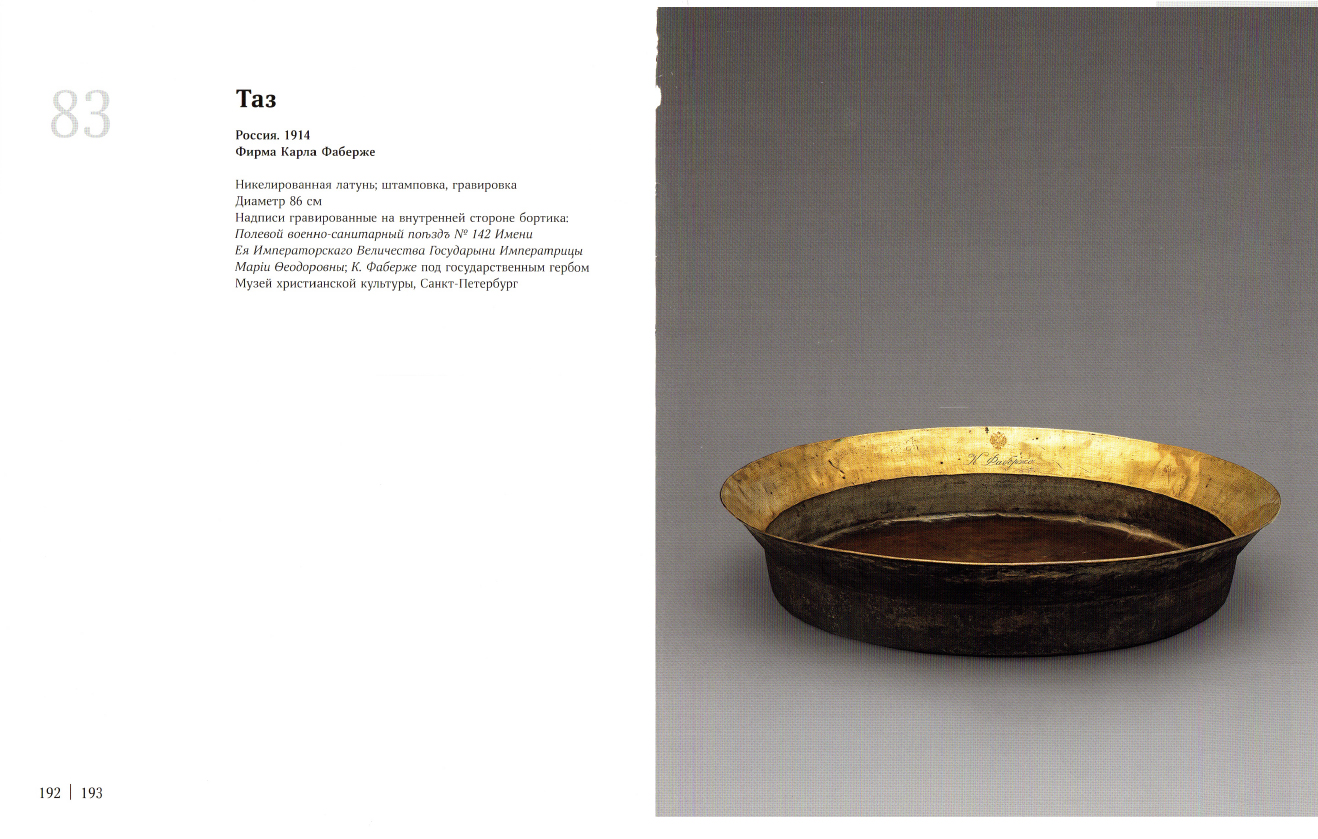
Fabergé – Jeweller to the Imperial Court (exhibition catalogue)
By exhibiting fakes you are not only insulting the good name of Fabergé, you are destroying the authority of the Museum you have been appointed to lead. You are betraying your visitors’ trust. You are deceiving them. You are operating under false pretences. No other major museum in the world would allow fake objects to be showcased within its walls. Perhaps you should bear in mind the fate of Catherine de Zegher, the Director of the Ghent Art Museum who was sacked after exhibiting Russian Avant-Garde fakes. Igor and Olga Toporovsky, the owners of these works, were arrested by the Belgian police on charges of fraud.
Your shameful Fabergé exhibition besmirches the reputation of Russia’s pre-eminent museum: an immense institution with a long and glorious history. Your exhibition constitutes a blasphemous outrage against Russia culture. If this exhibition is merely an error of judgment – which, alas, I feel compelled to doubt – I urge you to close it down without delay.
Andre Ruzhnikov
London
12 January 2021

